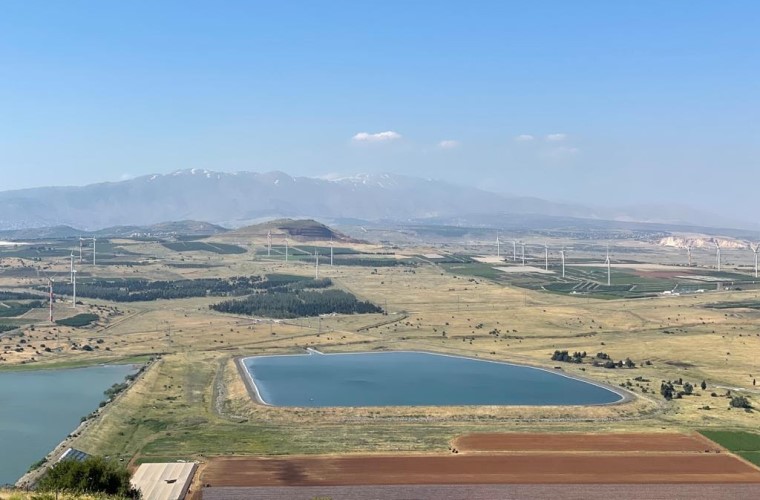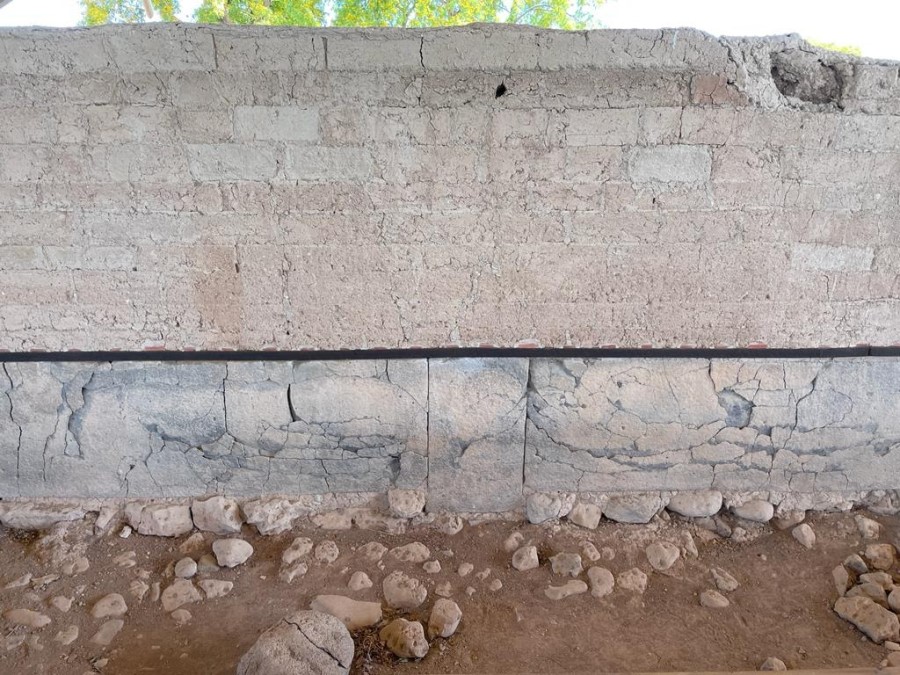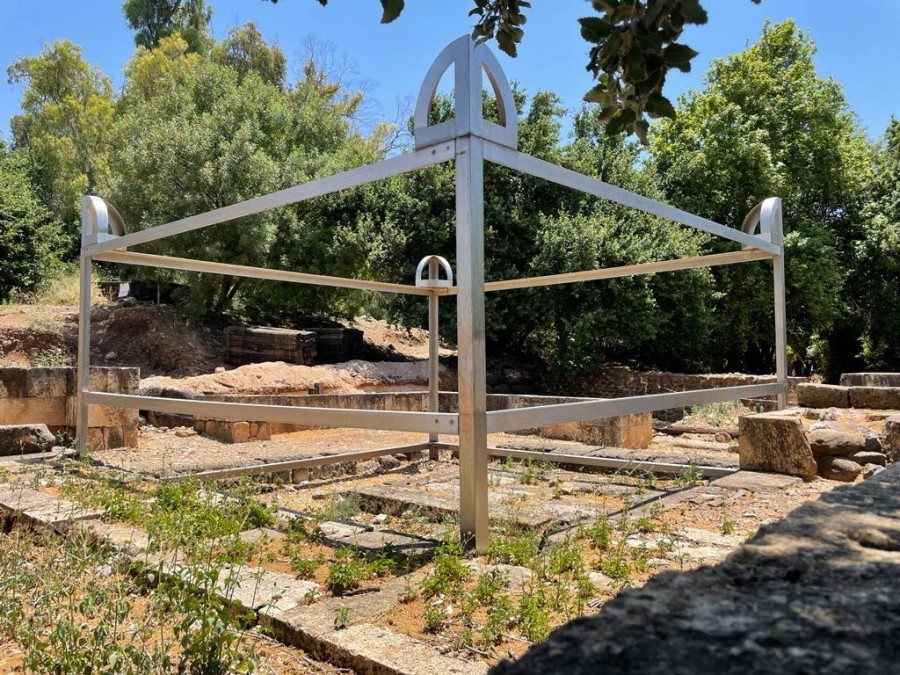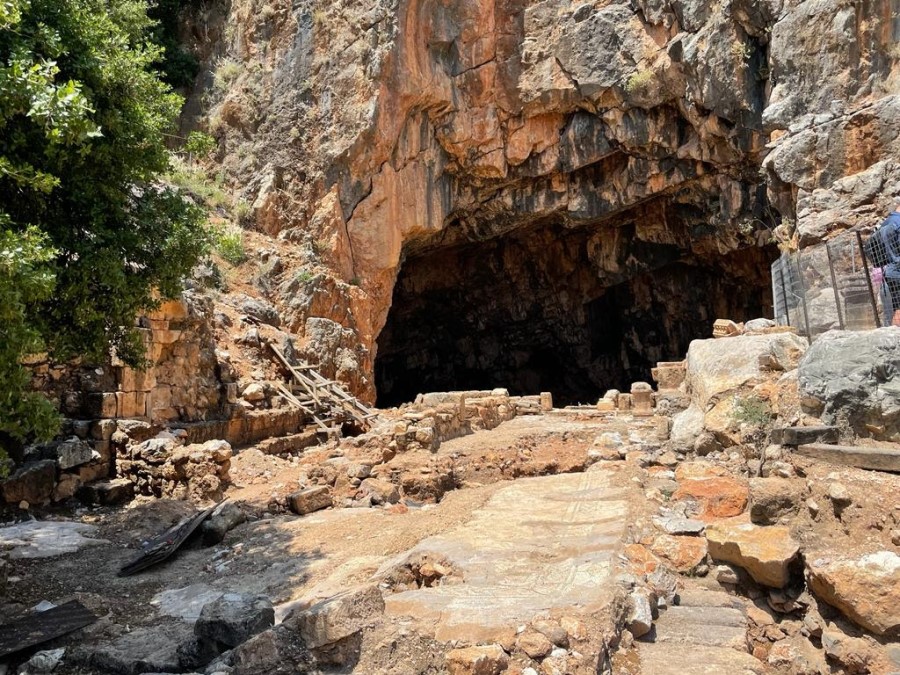Shalom!
Today we traveled north of Galilee to the Hula Valley and east to the Golan Heights (biblical Bashan). It was a warm day with clear skies. Here are a few highlights:
One of the first stops of the day was Tel Hazor. Hazor was the largest city in Canaan when Israel invaded under Joshua, but Hazor’s size soon diminished. Archaeologists have uncovered a small destruction/burn layer at Hazor dating to the time of the conquest (Josh 11:1-13) and a much larger burn layer dated to the period of the Judges. The book of Judges does not mention Israel burning Hazor after Deborah’s/Barak’s victory against Hazor’s king (Judges 4:1-24), but Israel’s apparent decision to eradicate the dominating threat makes sense. The picture above is of the cracked and slightly discolored stones from the city’s palace area in the second burn layer; the stones became brittle after exposure to high heat. Hazor remained unoccupied until Solomon fortified the city again during his reign (there’s a trademark six-chambered gate uncovered at the site, 1 Ki 9:15). Hazor then served the northern kingdom of Israel until the Assyrian king Tiglath-Pileser III destroyed the fortress-city in 732 BC (2 Ki 15:29). Israel’s exile followed soon after.
At the north end of the Hula Valley above the sea of Galilee is Tel Dan, the site for the ancient city of Dan. Dan is a city with a sorry history. Originally a Canaanite settlement know as Laish/Lesham, the city was conquered by the tribe of Dan and renamed (Judges 18:27-29; Josh 19:47); the Danites had previously failed to obtain their own divinely ordained inheritance in the Sorek Valley/Coastal Plain and had migrated north (Judges 18:1-2, 11-13). According to Judges 18:30-31, the new city of Dan was soon the host of an idolatrous cult led by Jonathan the Levite. Finally, Jeroboam I, the first king of the northern kingdom of Israel, chose Dan as one of the two sites for his golden calves so that Israelites would no longer worship in Jerusalem (1 Ki 12:26-33). We visited the uncovered high place of Dan on which the calf probably once stood. Just a few steps below the high place is the site where a large horned altar also once stood for offering sacrifices (see picture). The city of Dan was first conquered by the Arameans under Ben-hadad (2 Chr 16:4) and then finally destroyed by the Assyrians around 732 BC.
After Tel Dan, we drove east to the base of Mount Hermon to visit the site of ancient Caesarea Philippi. The city, built by Herod Philip (a son of Herod the Great), was a thoroughly Gentile city and a center of pagan worship. Though Herod Philip named the city after himself and Caesar Augustus, most Gentiles knew the city as “Panias” (Arabic “Banias”) since it was especially dedicated to the worship of the Greek satyr-god Pan. We visited the site’s temple complex where three main temples stood in Jesus’ day. The central temple was dedicated to the goddess Roma and to Rome’s emperor and was built in a cave. This cave was especially revered by the Greco-Romans since water flowed out of it from some unknown source (an earthquake would later divert this flow). The Greco-Romans supposed that the mysterious water came from the underworld itself; thus, the cave became known as “the gates of Hades.” Poignantly, Jesus uses this same phrase in the region of Caesarea Philippi when describing how the church built on the confession of Jesus as God and Christ will not be overcome (Mt 16:13, 16-18). Furthermore, the transfiguration that took place soon afterwards may have occurred on the foothills of Mount Hermon since Jesus was already in that area (Mt 17:1-2).




